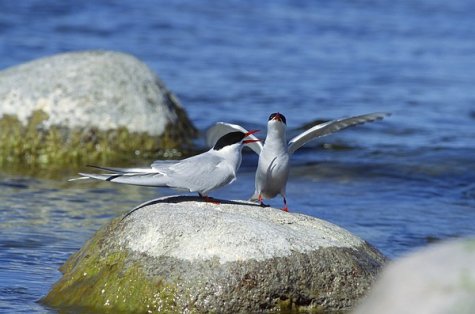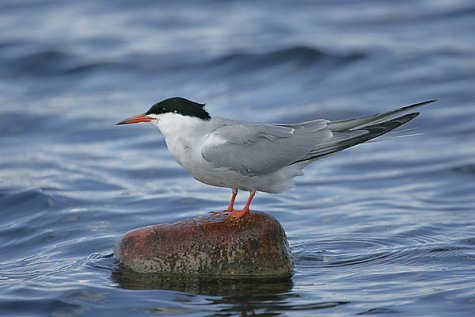Arctic terns are not afraid of people
Fotod: Arne Ader
Arctic tern display on beach
Arctic tern Randtiir Sterna paradisaea
Two species of terns with a red beak and legs nest in Estonia. On the sea coast Arctic terns lie on eggs now: their legs seem to be proportionally particularly short. Common terns inhabit inland waters; their proportions look to be quite in order. If we meet a tern-like bird with different beak or leg colours a bird guide should be consulted, we may then have to do with some rarely occurring species.
The nesting colonies of arctic terns are small and eggs are in the nests. A full clutch contains two-three eggs, incubation lasts almost three weeks. If all goes well the young will fledge in August. The new generation is at first fed insects that fly at the sea surface, for instance dragonflies; a little later fish are added: that is the principal food of terns. The nest is usually in open landscapes or on rocks reaching out of shallow water. People straying near such colonies are attacked fiercely by the arctic terns. Interaction with birds nesting nearby is in contrast quite peaceful.
The wintering areas of arctic terns reach to South Africa and the Antarctic continent. The breeding areas in turn reach to the polar areas. We have probably to do with the world’s longest nesting migration performers. Researchers have determined the length of one individual’s migration to 17 000 kilometres.
Common tern










